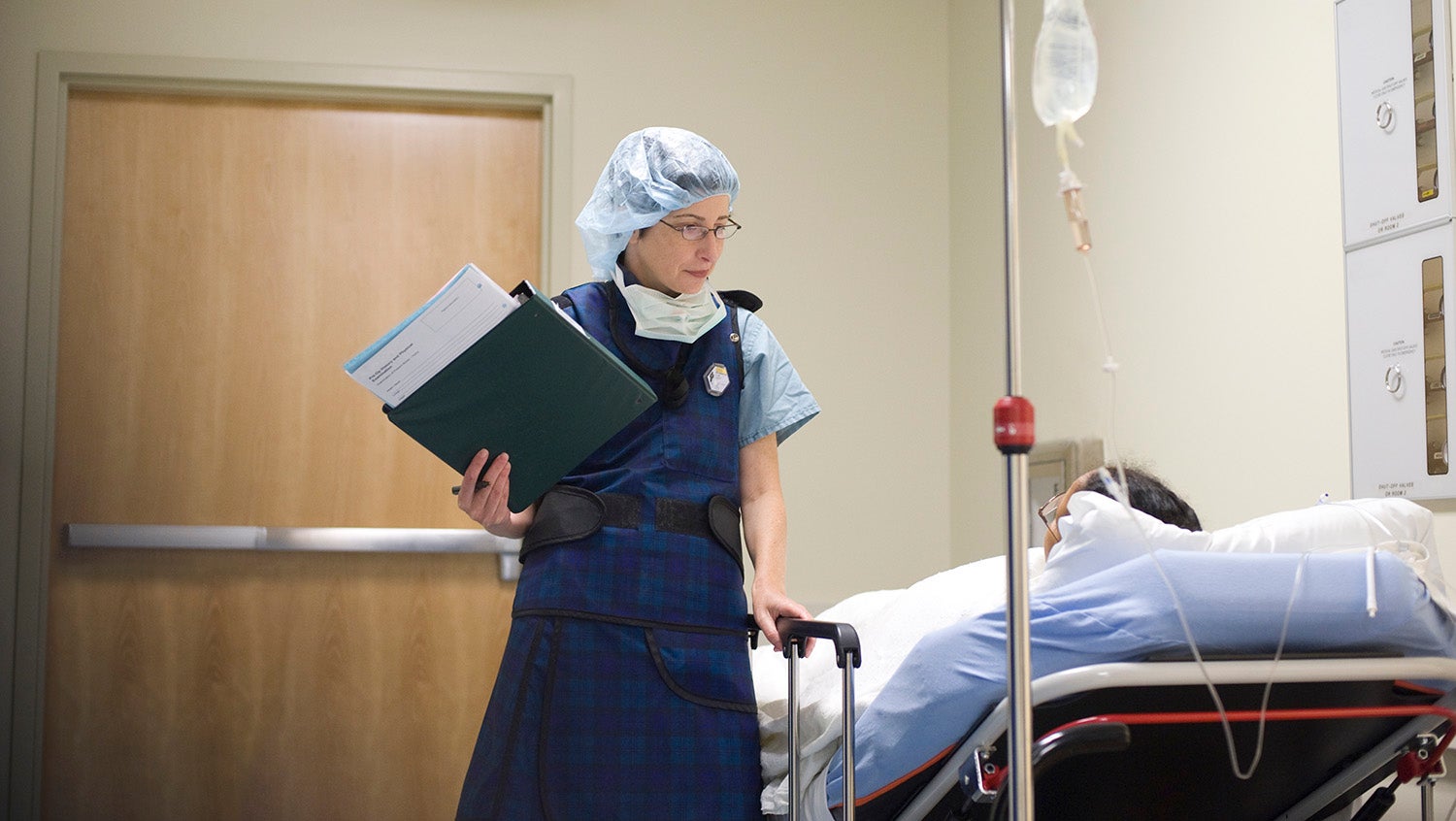What Does Post-Operative Pain Management Look Like Amid the Opioid Epidemic?
September 7, 2021
By Leslie Doyle

Getty Images
There is a role for opioid-based medications, but new procedures bring a multifaceted approach to pain management—and bring the patient into the treatment conversation.
When he accidentally crushed his fingers while operating a tractor, Christopher Shanahan, MD, MPH, faced issues patients often feel after surgery: pain, anxiety, and insomnia. The difference was that, as a pain researcher, he had the information, knowledge, and training to decide for himself if and how he wanted to use opioid-based medications for his pain. Other people may not be as equipped to understand information about these prescription medications, particularly after operations. Shanahan and his colleagues at Boston Medical Center (BMC), including David McAneny, MD, have spent recent years working to change that.
“Even before there was public interest in the opioid crisis, we had concerns about the adverse effects of these medications for pain management,” says McAneny, division chief of general surgery and chief surgical officer at BMC. “They deaden pain, but they can also interfere with cognition, and can lead to side effects like nausea, constipation, and altered sensorium.”
That is not to say that there is no role for prescription opioids for pain management. Instead, the idea is to not exclusively rely upon opioids and bring patients into the discussion about post-operative pain management.
“Narcotics are a tool that is effective if used correctly,” says Shanahan. “There is no silver bullet when it comes to pain management, though. Supporting a patient might involve some amount of narcotics, anti-inflammatories, physical therapy, and other techniques.”
Using multiple tools for post-operative pain management
It struck McAneny and Shanahan, among other physicians and surgeons, that there was room for multimodal therapy that could enhance patients’ recovery. They employed techniques, such as building up appropriate levels of non-opioid analgesics in the system prior to and after operations as a means to attenuate pain from the start. Around the same time, new data showed that providing appropriate doses of acetaminophen and non-steroidal anti-inflammatory drugs (NSAIDs) on a regular basis was tantamount to giving oxycodone, but without the subsequent side effects.
“It’s important to get on top of pain ahead of time,” explains McAneny. “Once someone is in significant pain, it can be tough to help them overcome the fear of pain, so we use multiple tools to do this. Injecting local anesthetics during operations, for example, can disrupt the pain cycle for several hours after an operation.”
“There is no silver bullet when it comes to pain management.”
The multimodal effort coincided with enhanced recovery after surgery (ERAS) protocols that BMC was implementing at that time. This approach brought together surgeons, anesthesiologists, nurses, and pharmacists to work on protocols, including those for prescribing pain medications. Through these efforts, BMC has reduced inpatient opioid use among surgical patients by 41% since 2017 and cut discharge opioid prescribing for surgery patients by 25%.
McAneny has seen the difference in patients firsthand: “In the past, we would give patients a lot of narcotics to get them comfortable, but they might end up so groggy that they could not perform the necessary pulmonary and mobilization exercises to prevent pneumonia and blood clots. Having a multimodal approach has been a game-changer. I’m amazed at how well patients look with limited—or no—narcotics, even on the evening after surgery.”
Bringing standards to post-operative opioid prescribing
Understanding that there is still a role for opioids in multimodal pain management, Shanahan and his colleagues wanted to investigate existing practices for prescribing opioid-based medications after operations. They conducted a study in 2015 to understand post-operative opioid prescribing, the experience of patients undergoing elective ambulatory operations, and patient risk for medication misuse.
The study, recently published in BMJ Open, found that surgeons prescribed opioids for post-operative pain to 95% of participants, with a mean of 32 oxycodone (5-milligram) pills. Participants with a pre-operative history of chronic pain, prior opioid prescriptions, or a history of high-risk drug use were more likely to consume higher amounts of opioid medications, and yet surgeons did not appear to incorporate these factors into prescribing practices. Notably, the researchers discovered that, although different operations resulted in varying levels of pain, surgeons did not vary the amount of opioids prescribed.
The researchers agreed that there were opportunities to both test and refine optimal post-operative pain management strategies.
“Opportunities to improve post-operative opioid prescribing include system changes among surgical specialties along with targeted patient education and monitoring,” the journal article reads.
Based on this research and similar studies, BMC surgeons across 20 different specialties designed peer-reviewed prescribing guidelines for different types of operations. This gave them an evidence-based structure for analgesia following most operations. If patients required more medication, surgeons can authorize this in limited numbers through an electronic prescription system.
Partnering with patients for effective pain management
Good communication is at the heart of BMC’s pain management approach.
“We have to have honest conversations that we can’t alleviate every speck of pain, there could be adverse effects, and we will be there for them through it,” Shanahan says. “A lot of patients are terrified after surgery. They’re anxious, they’re not sleeping, things don’t feel right, and all of a sudden they feel like they need something more.”
Despite these valid and strong emotional reactions to pain and potential pain, patients were observed to self-administer only 48% of the opioid pain medications prescribed by their surgeons, suggesting that some patients were prescribed excessive amounts that could increase the risk of addiction and, subsequently, accidental or intentional overdose and death.
Shanahan and McAneny hope more clinicians will have an open dialogue with patients before operations, so that they know what to expect and can have systematic follow-up to better tune pain control.
“The best way to manage pain is to talk to patients, understand their fears, and come up with simple strategies for addressing them,” Shanahan says.


